Hanoi traffic
On this page, you will learn more about Hanoi traffic, including its status, safety guides, and an interactive map.
Hanoi traffic status
Hanoi experiences significant traffic congestion, particularly during peak hours (6 AM – 9 AM and 4 PM – 7:30 PM). This is due to a rapid increase in the number of vehicles, particularly motorcycles, outpacing road infrastructure development. The situation is further exacerbated by factors like the high density of the city center, a lack of developed public transport, and inadequate parking.
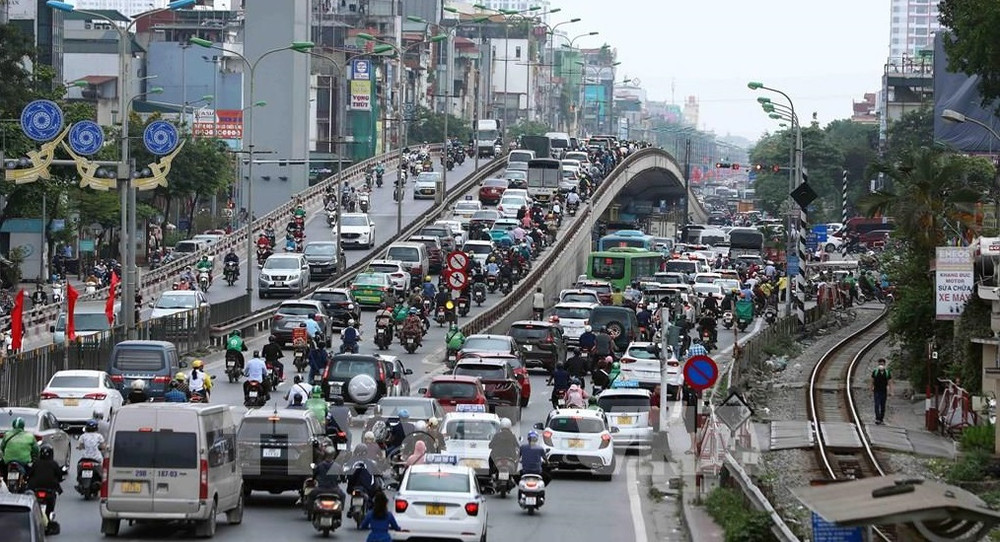
Safety guides
Train streets schedule
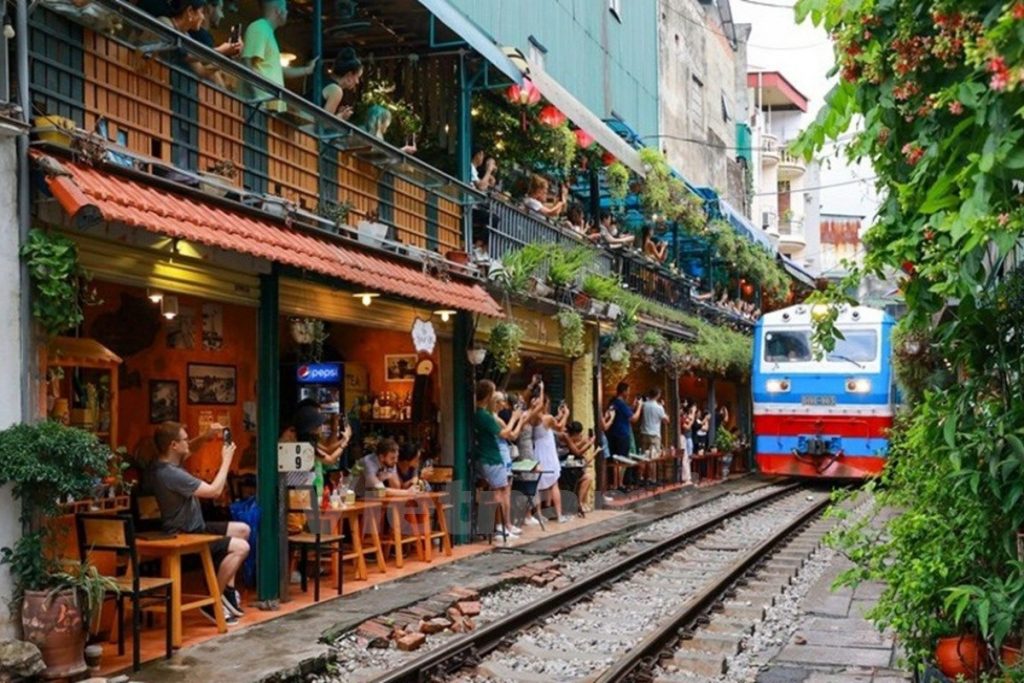
The railway system extends throughout Hanoi, but there are two streets in the Old Quarter notably renowned for their train tracks. Hanoi Train Street is also called as Railway Street. It runs between Kham Thien and Le Duan Street or Phung Hung and Tran Phu Street. The street is lined with houses on either side, leaving just enough space for a train to pass through.
You are not obligated to buy any form of ticket to experience the train street. If you decide to sit inside a café and wait for the train to pass, you will need to pay for drinks (beer, tea, coffee, etc).
The train schedules differ between Le Duan Train Street and Phung Hung Train Street. Additionally, train timings vary throughout the year. You can refer to the Hanoi train street timetable updated in 2024 below:
| Day | Time (AM) | Time (PM) |
| Monday – Sunday (Le Duan Train Street) | AM: 6h10 am, 11h40 am | PM: 3h30pm, 6 pm, 7h10 pm, 7h50 pm, 9 pm |
| Monday – Friday (Phung Hung Train Street) | AM: 8h30 am, 9h30 am, 11h50 am | PM: 3h15 pm, 7h50pm, 9h15 pm, 9h30 pm, 10 pm |
| Saturday – Sunday (Phung Hung Train Street) | AM: 6 am, 7h15 am, 9h30 am, 11h50 am | PM: 3h30 pm, 5h30 pm, 7h30 pm, 7h50 pm, 9h15 pm, 9h30 pm, 10 pm |
Tips to keep in mind:
Stand behind the yellow line: There is a yellow line painted on the ground to indicate the safe distance from the tracks. Make sure to stand behind this line when the train is approaching.
Don’t touch the train: The train passes by very closely, and it may be tempting to reach out and touch it. However, this is extremely dangerous and should be avoided at all costs.
Stay alert: The train can come unexpectedly, so make sure to always be aware of your surroundings and listen for any warning signals.
Don’t block the tracks: It’s important to keep the tracks clear at all times, so make sure not to stand or sit on them for a photo opportunity.
Tips for pedestrians
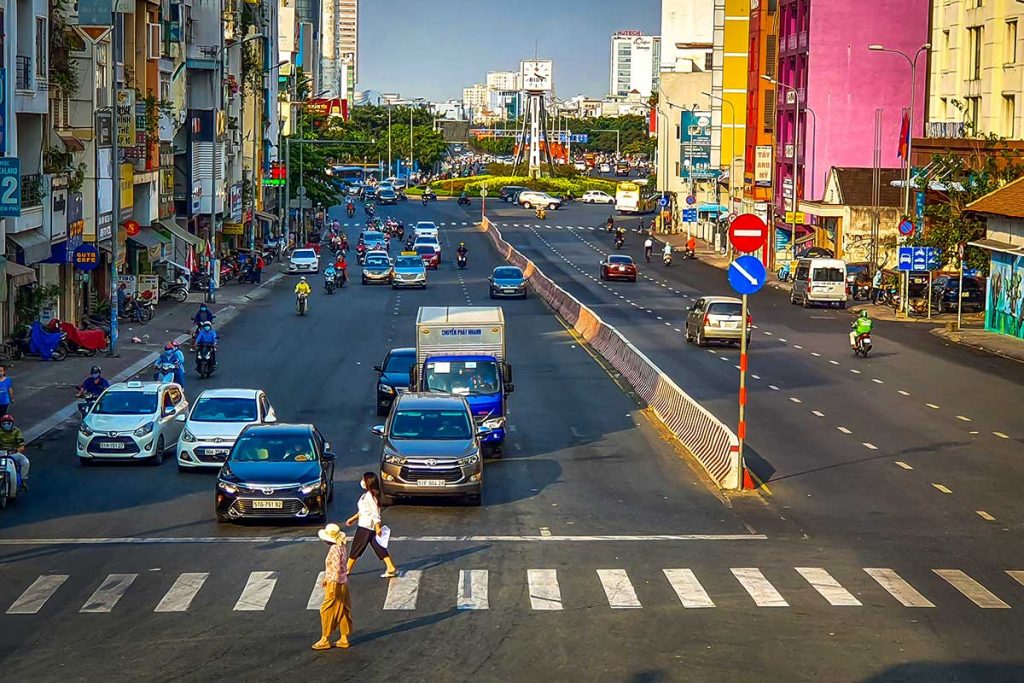
Useful tips on how to cross the streets in Hanoi:
Follow the groups crossing the streets:
This is the best way to crossing the streets – you just follow the crowds at the same time crossing the roads. in this case, you are much more likely to be seen by a motorist when walking with a group than venturing across the street solo.
Walking slowly in even paces and crossing the streets firmly so that oncoming drivers can anticipate your position and adjust their drive path accordingly.
Do not run across busy streets:
When you do it suddenly, traffic participants could be unlooked- for, then they can not do proper reactions and they may hit you down.
Never go back or hesitate while crossing the roads, the motorcyclists may misunderstand you and hit you suddenly.For example, you are crossing, they think that you keep going ahead, then they move behide you.But you are scaring on the way, you step back again, then they may hit you while your stepping back due to their wrong anticipation.
Raise your hands to signal the traffic participants:
In this case, surely that your gestures tell oncoming drivers that you are firmly to cross, they will avoid the spaces or decrease speed limit so that you can reach the other side safely and easier.
Look on the right and left of you before and while crossing the streets:
It is quite common thing that many locals try to do short-cuts by driving against one-way streets.Make sure to look around for safe crossings.
Traffic jam guide
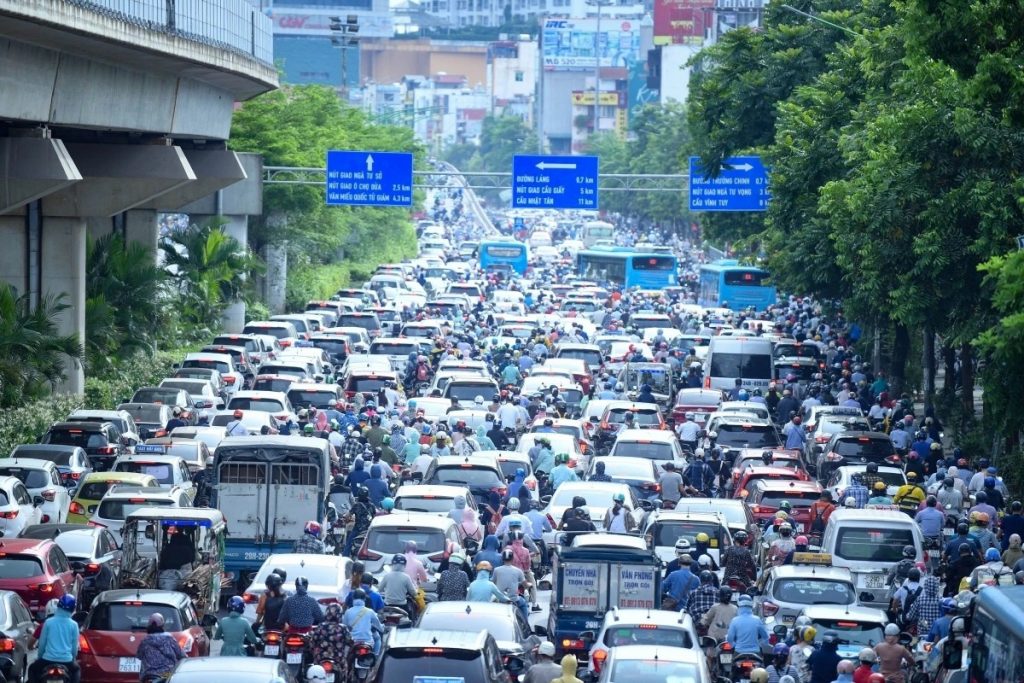
To navigate Hanoi’s traffic jams, consider avoiding rush hour, utilizing navigation apps to find alternate routes, and being mindful of traffic conditions. If stuck, stay calm, alert, and prepared with snacks and refreshments. Follow basic driving fundamentals, such as signaling lane changes and using mirrors. Remember that traffic jams are a normal part of city life and patience is key.
1. Planning and Preparation:
- Avoid rush hour: Hanoi’s traffic is particularly congested during peak commute times. Consider adjusting your travel schedule to avoid these periods.
- Plan alternate routes: Use navigation apps like Google Maps or similar to identify alternative routes that might be less congested.
- Be prepared: Pack snacks, water, and anything else you might need to stay comfortable and alert while stuck in traffic.
2. During a Traffic Jam:
- Stay calm and alert: Traffic jams can be frustrating, but staying calm and focused will help you navigate the situation more effectively.
- Don’t leave your vehicle: It’s generally safer to stay inside your vehicle unless you have a clear reason to leave and there are no safety concerns.
- Follow driving fundamentals: Use your blinkers when changing lanes or merging, monitor your surroundings using mirrors, and be aware of your surroundings.
- Listen to traffic reports: Check traffic reports on the radio or use navigation apps to get real-time updates on traffic conditions and potential detours.
3. Long-Term Strategies:
- Consider public transportation: If possible, utilize public transportation like buses or the upcoming Hanoi Metro to avoid traffic.
- Walk or bike: For shorter distances, consider walking or biking as alternatives to driving.
- Work remotely: If your job allows, consider working remotely to avoid the daily commute.
4. Understanding Hanoi’s Traffic:
Be aware of local traffic rules and customs. For example, it’s common for motorcycles and scooters to navigate through traffic in a way that might seem unconventional. Hanoi’s traffic is a mix of cars, motorcycles, and scooters, which can make it seem chaotic at times. Traffic jams can be caused by a variety of factors, including peak hours, accidents, road construction, and the sheer volume of vehicles on the road.
Understanding traffic signs
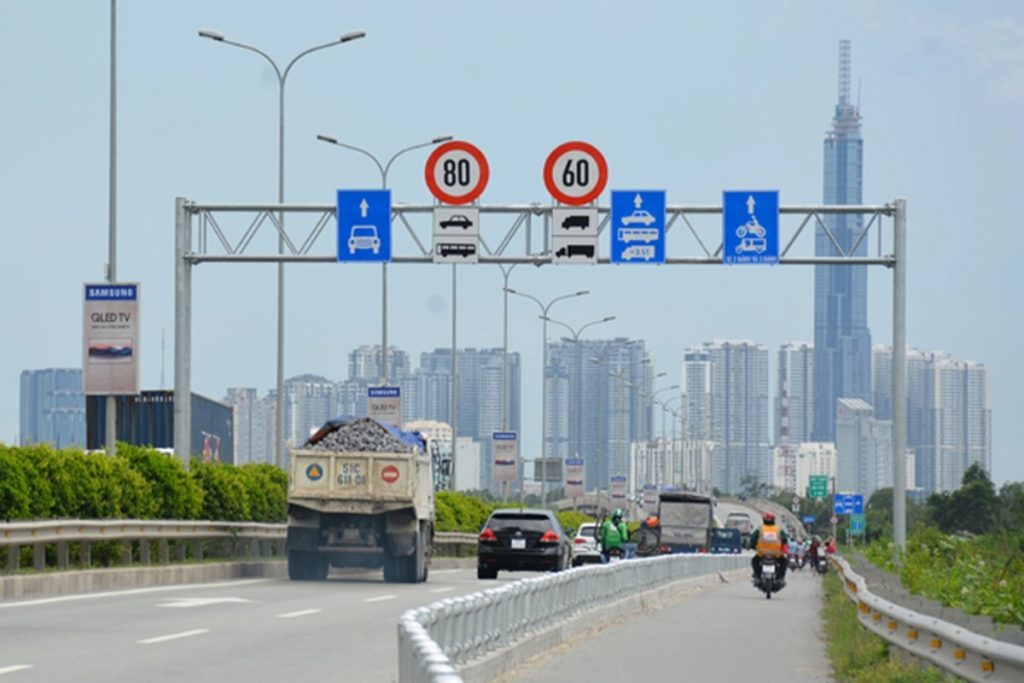
Based on the latest road traffic signs, we can divide them into 4 main groups. Specifically:
– Prohibition signs: No entry, no right turn, no pedestrian, no non-motorized vehicles, no stopping, …
– Warning signs: Intersection with priority road, underpass, narrow bridge, construction site, rockfall, …
– Regulatory signs: Overpass road crossing, horn press, pedestrian lane, …
– Direction signs: Priority road, U-turn area, parking space, dead-end road, hospital, …
– Supplementary signs: Turning direction, priority road direction, railway crossing, …
– Road markings: Standing lines and transverse lines
Here are 2 sources where you can learn about traffic signs in Hanoi (Vietnam):
Source 1: Traffic signs and explanation
Source 2: Tips for navigating traffic signs
